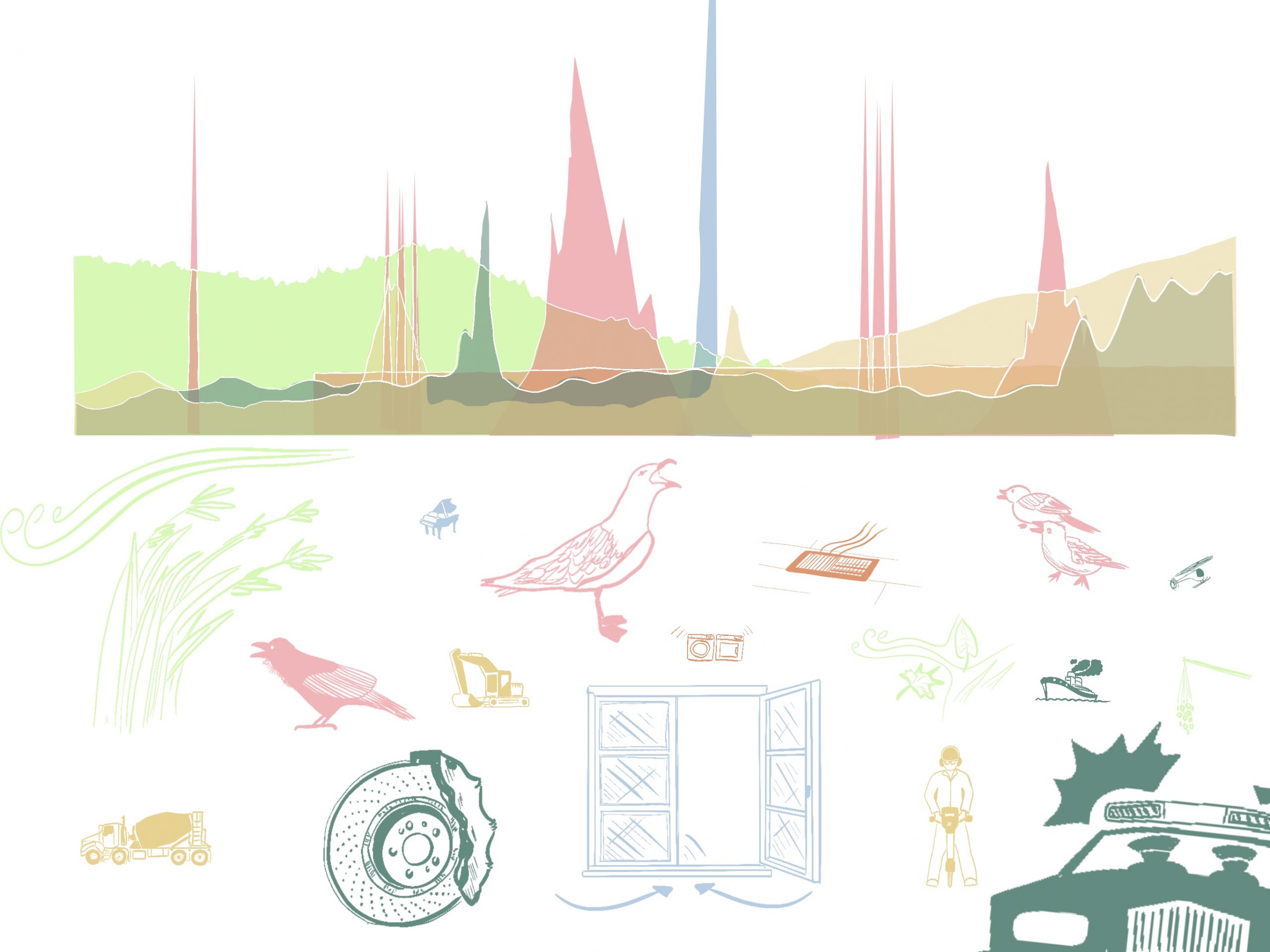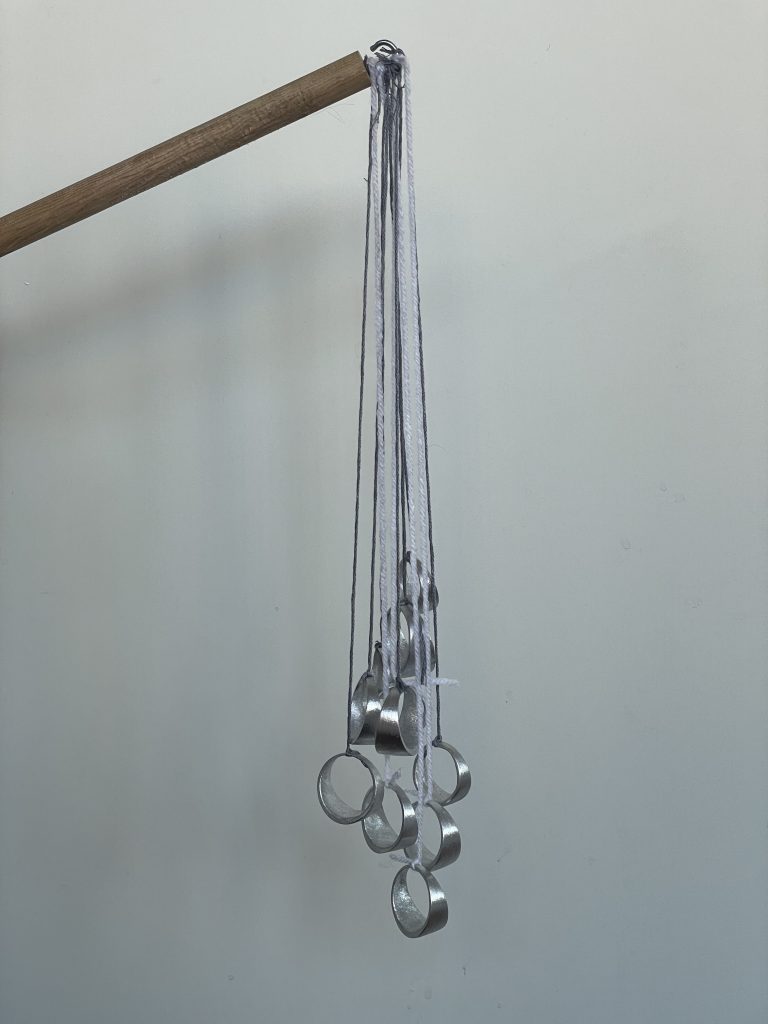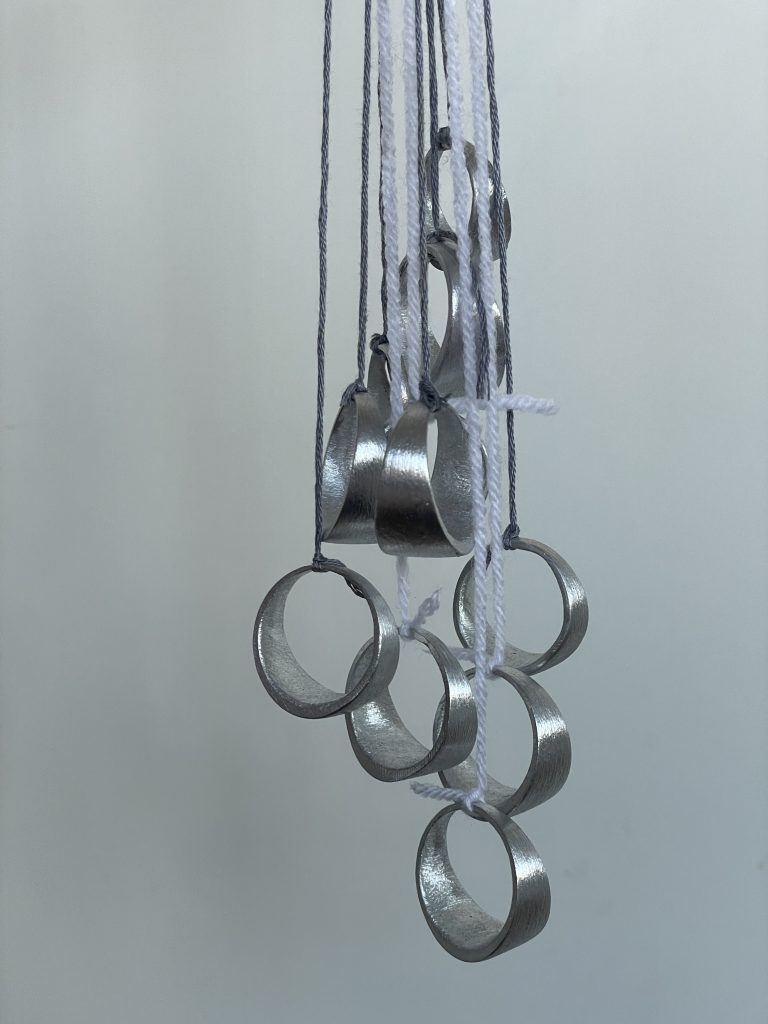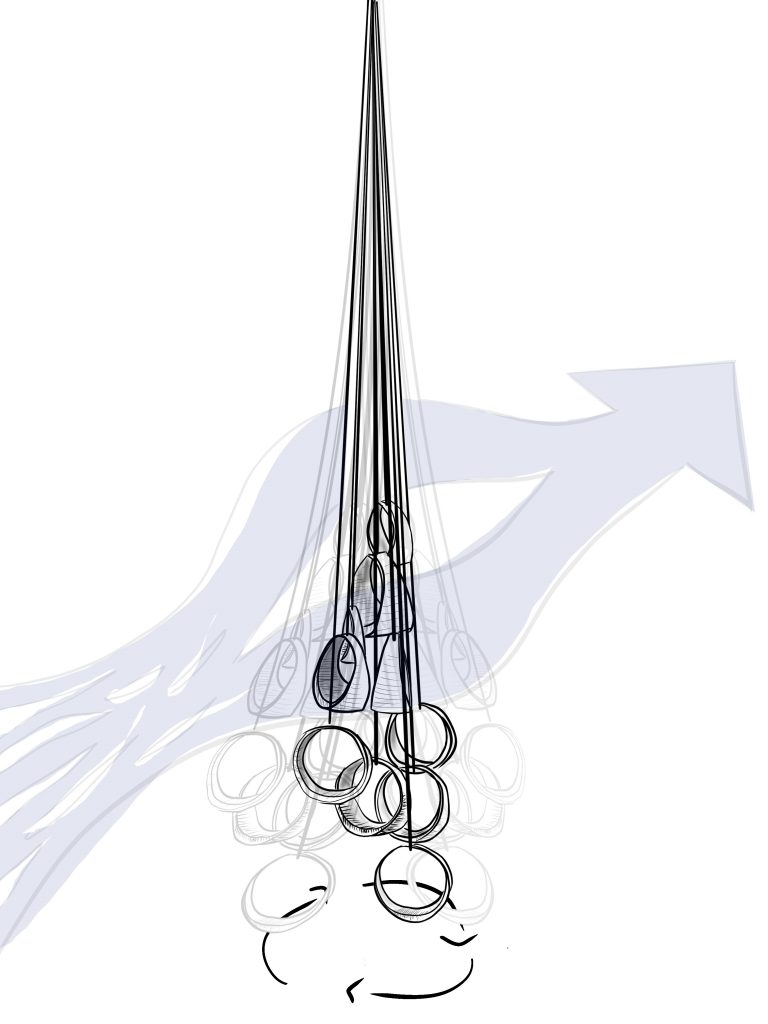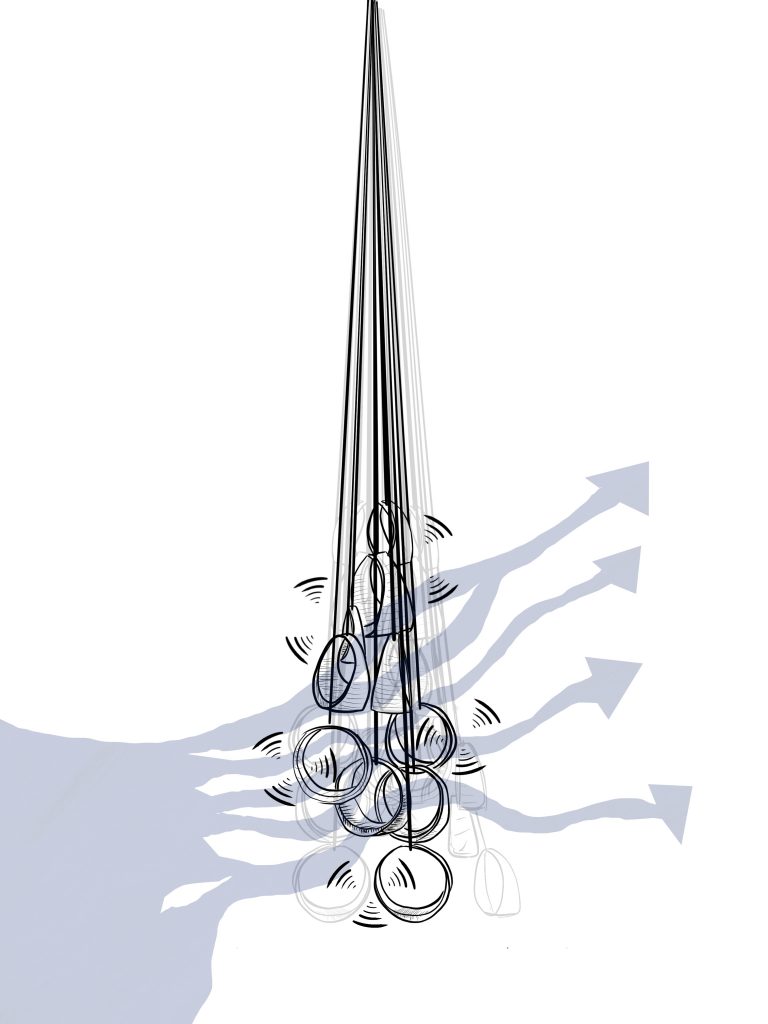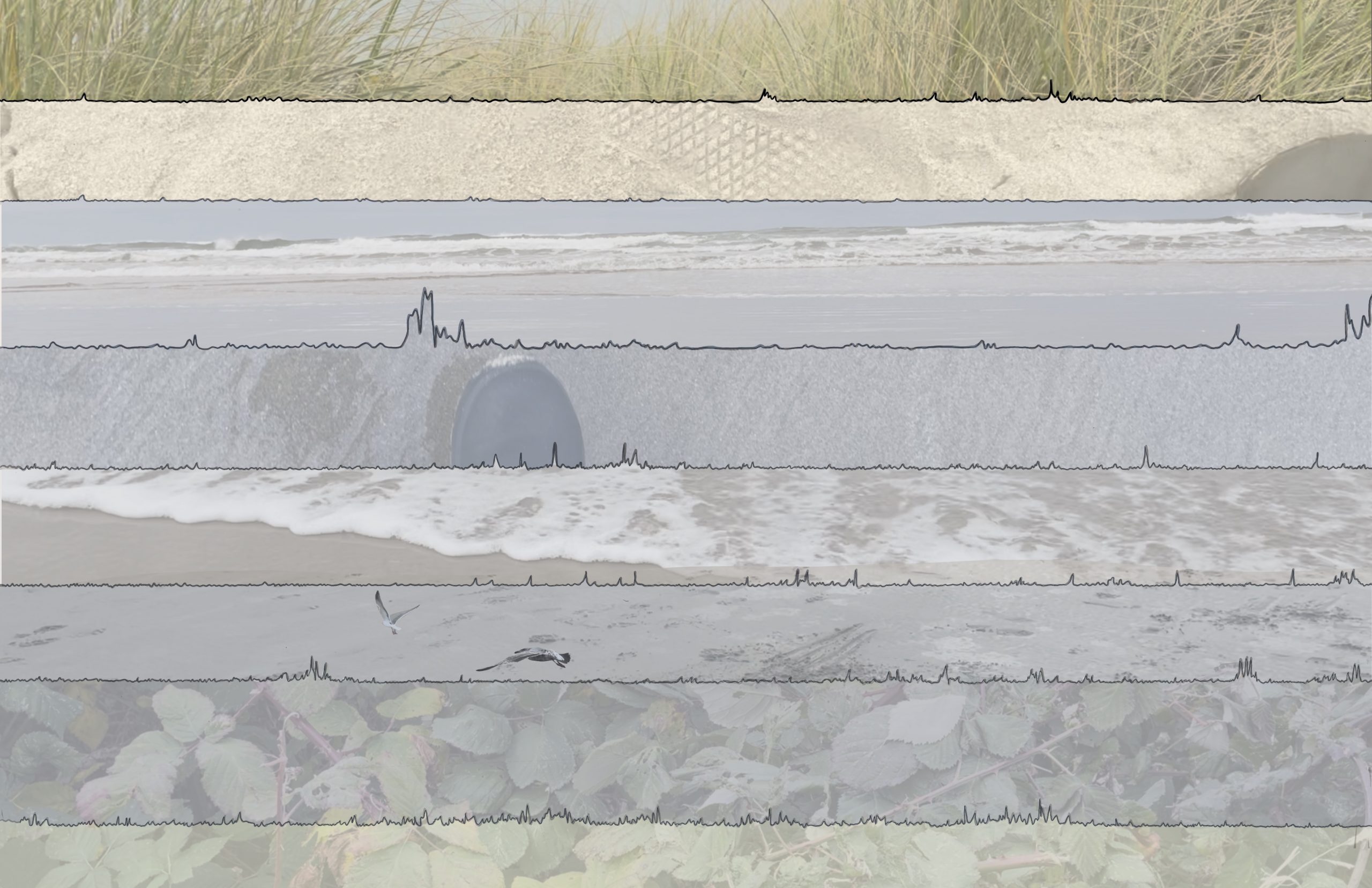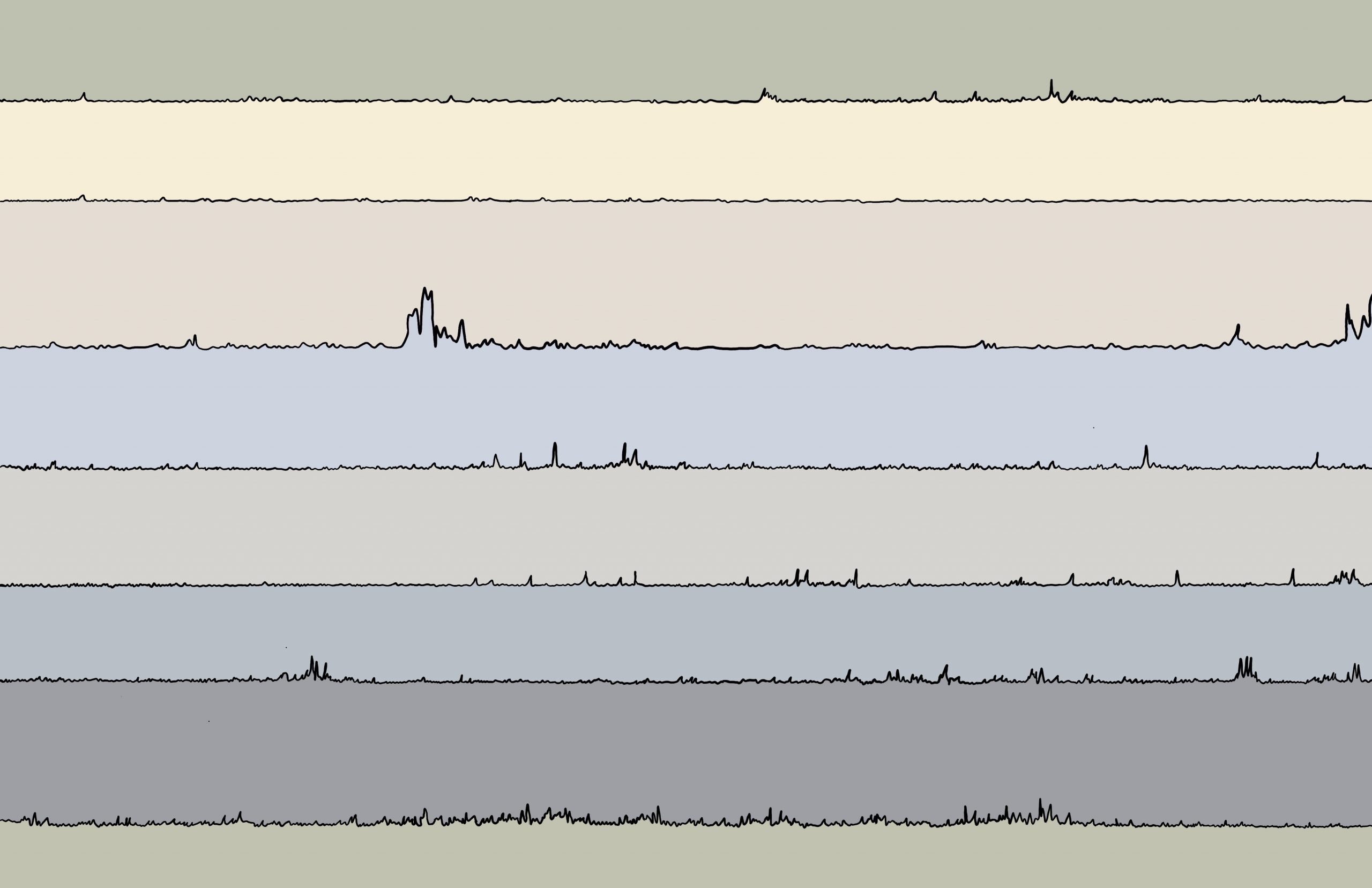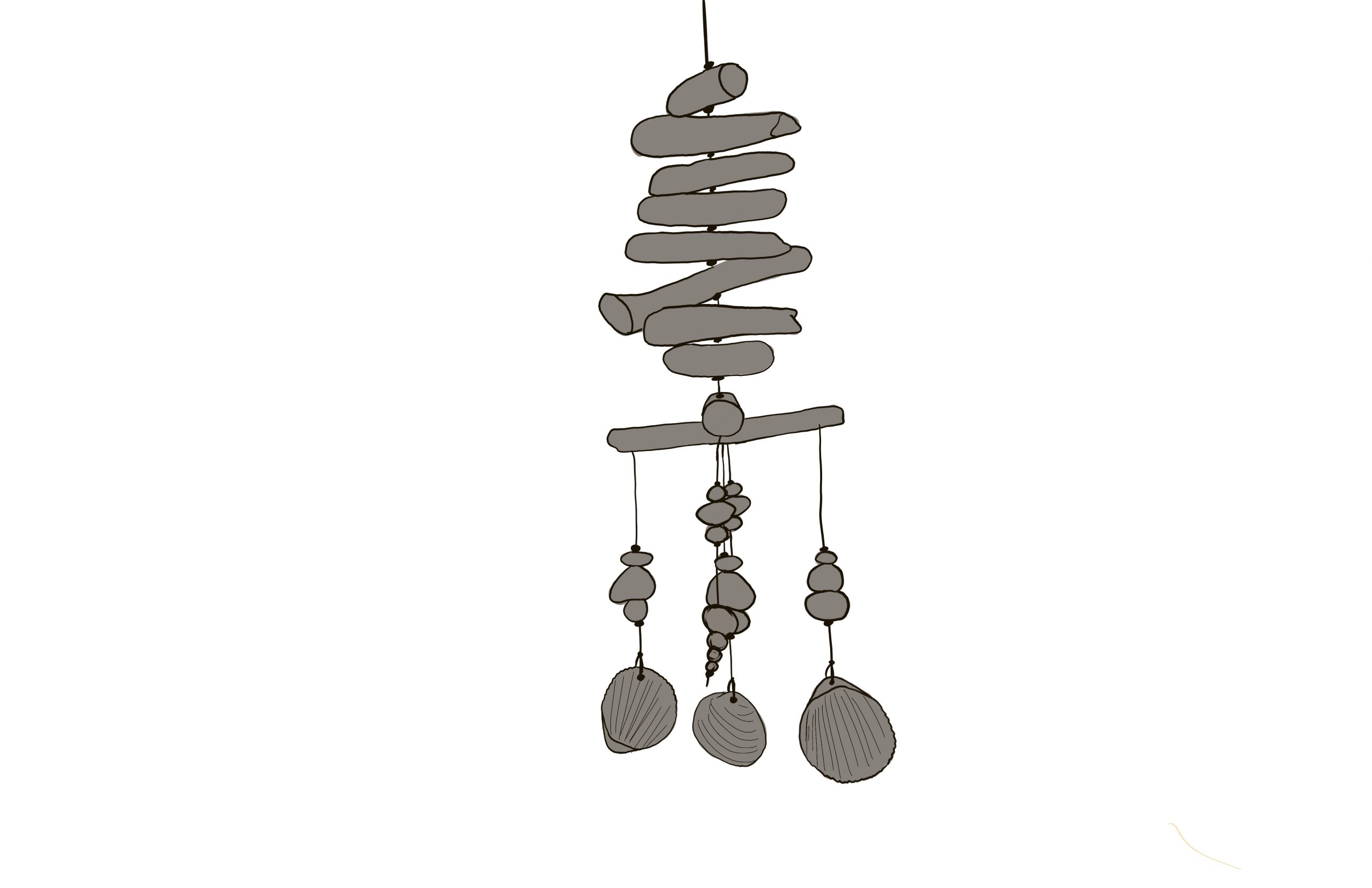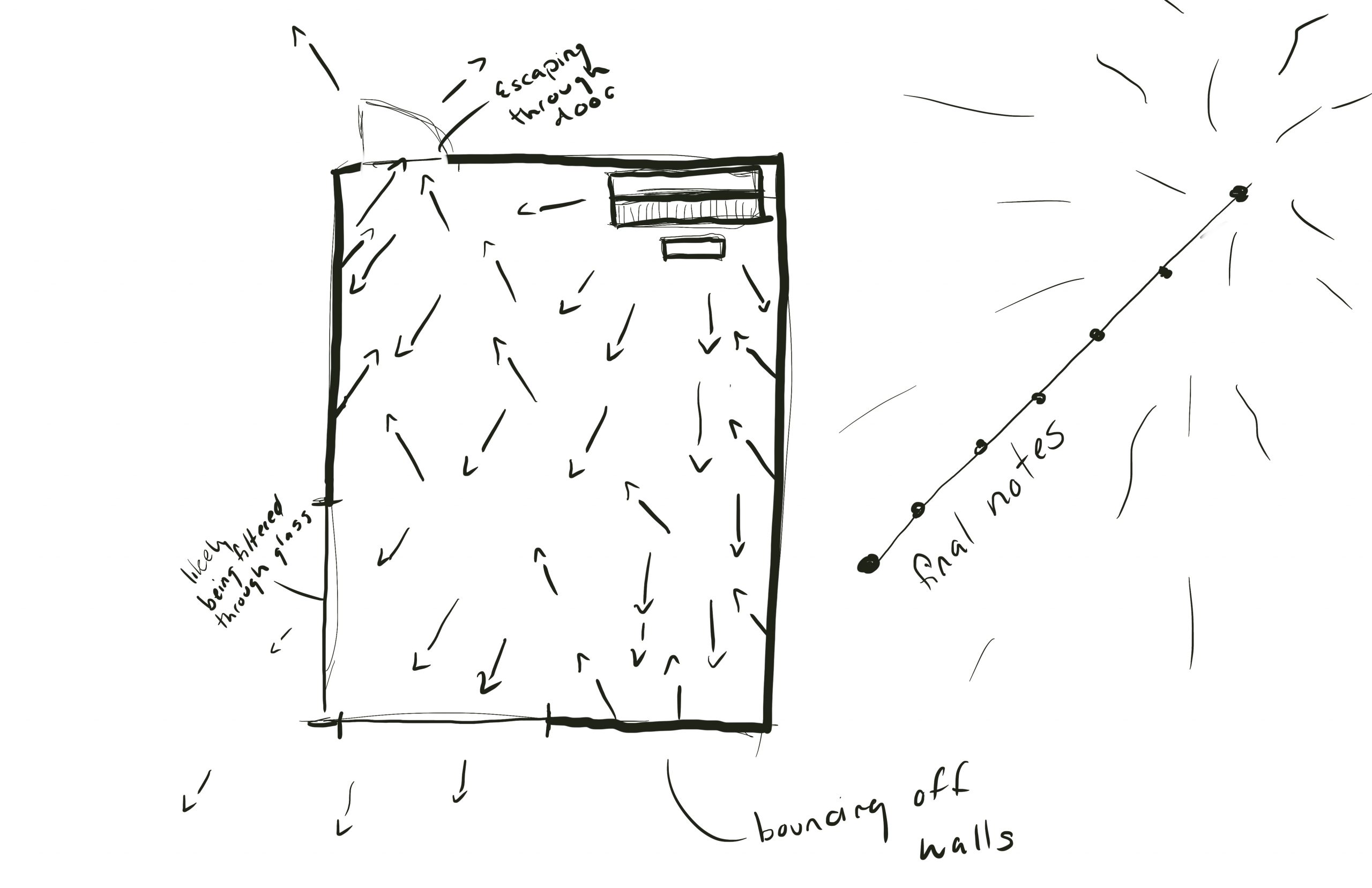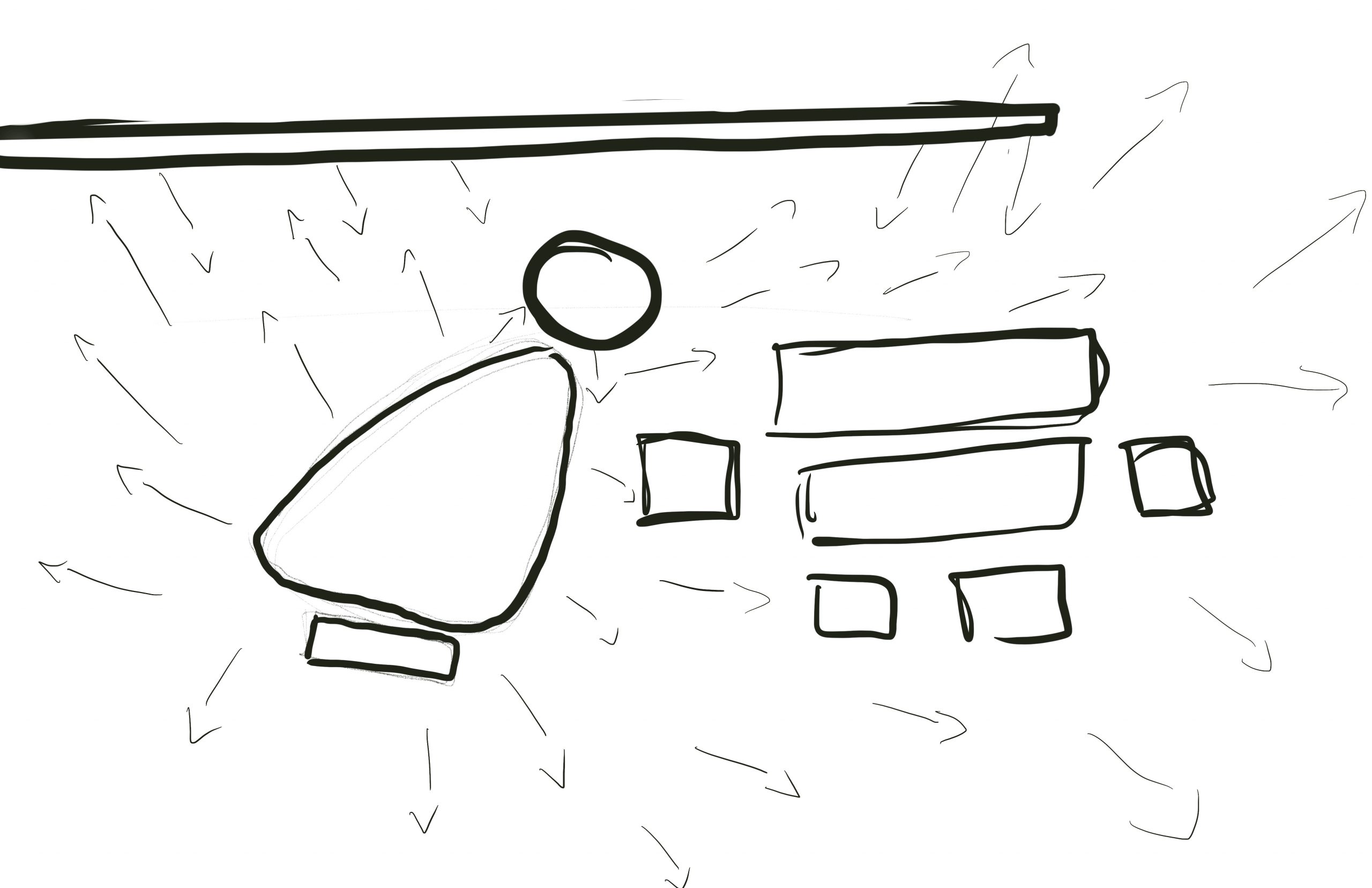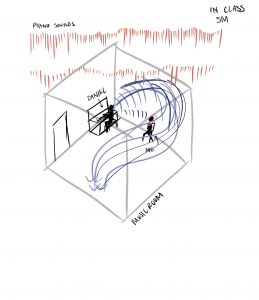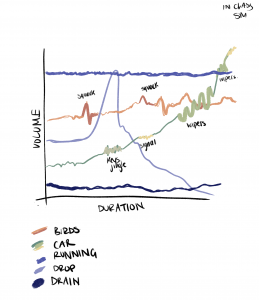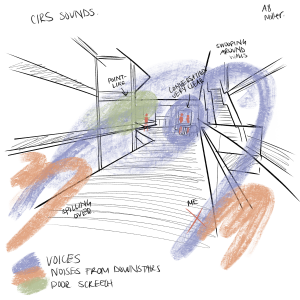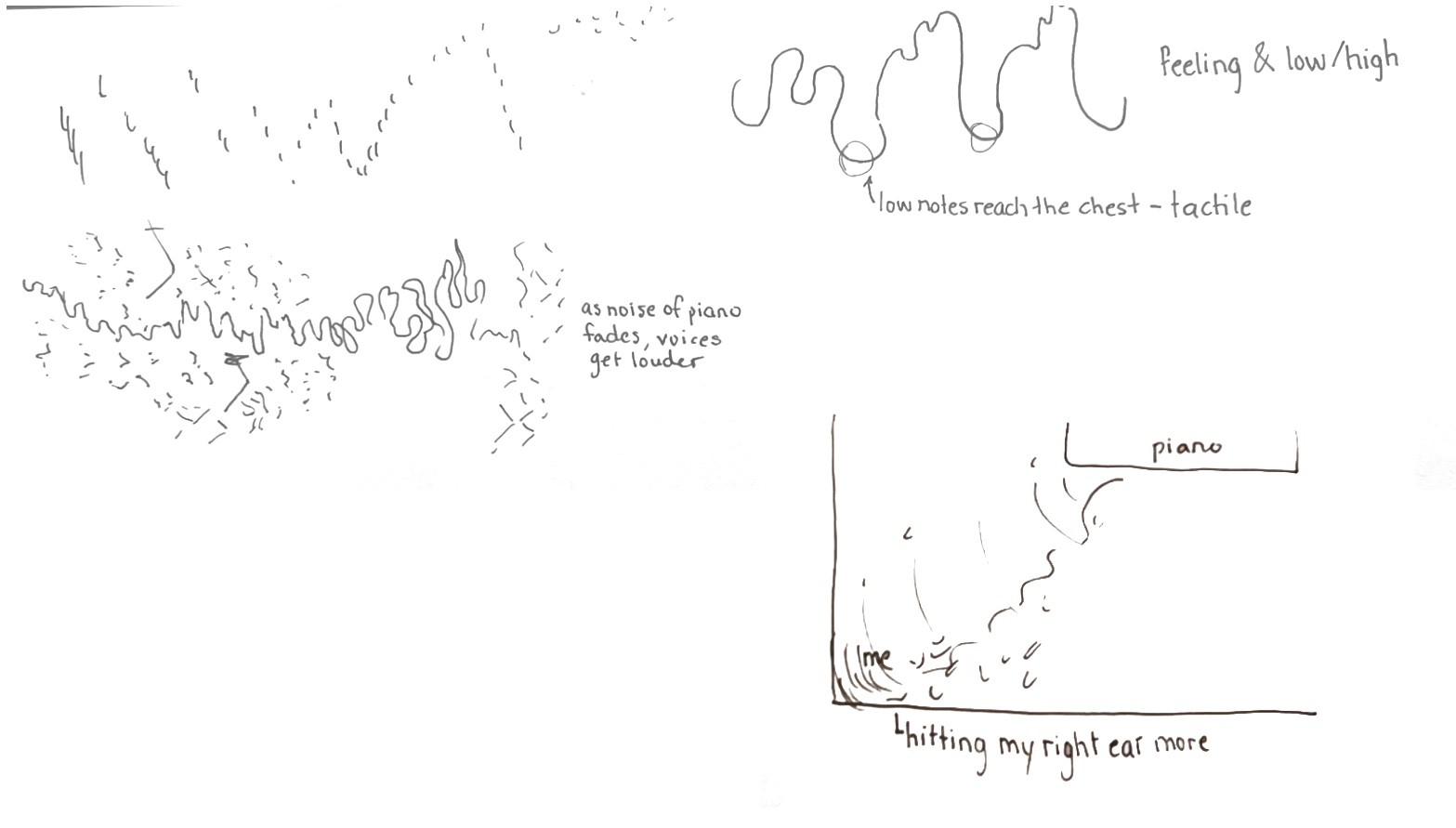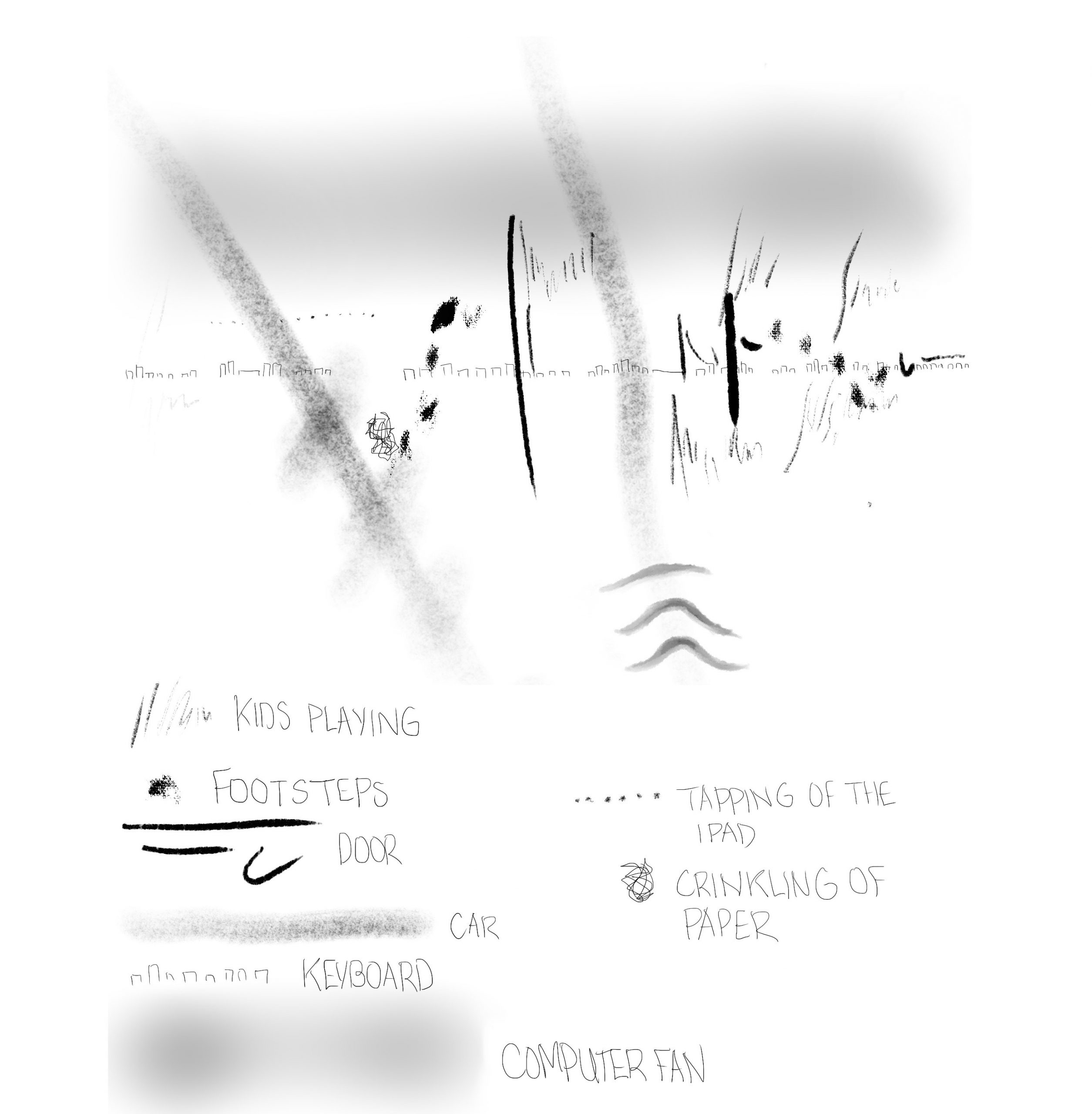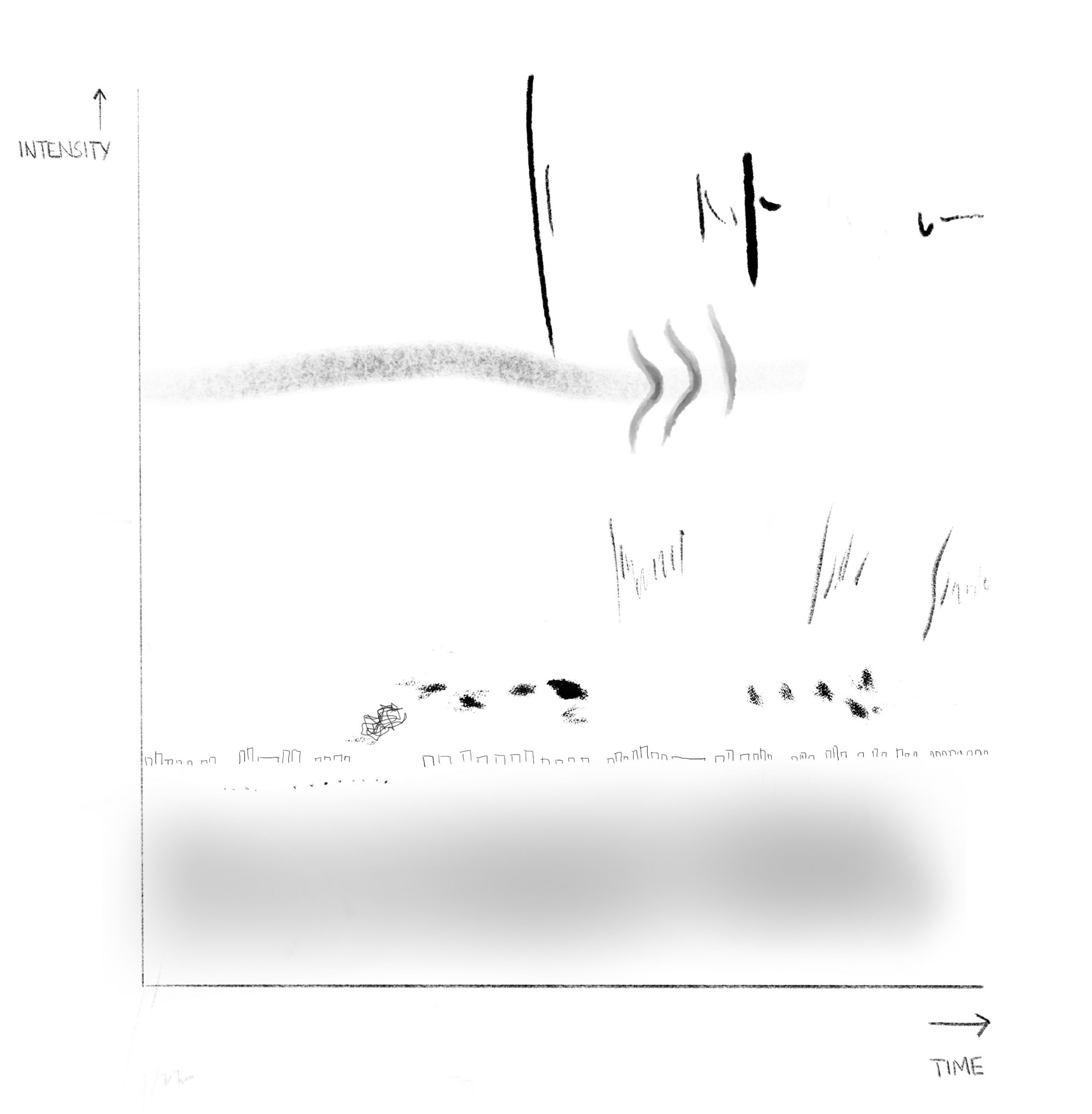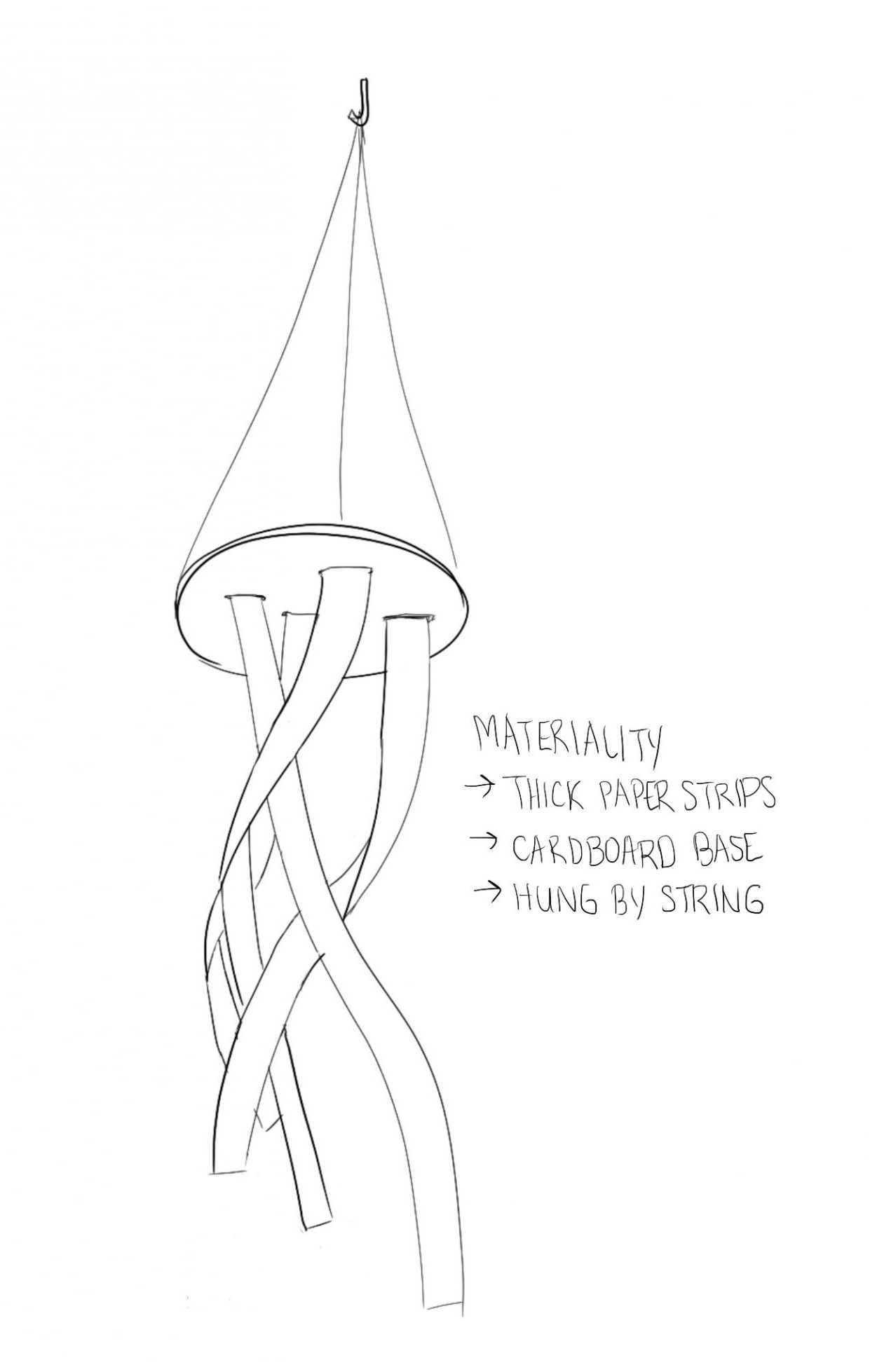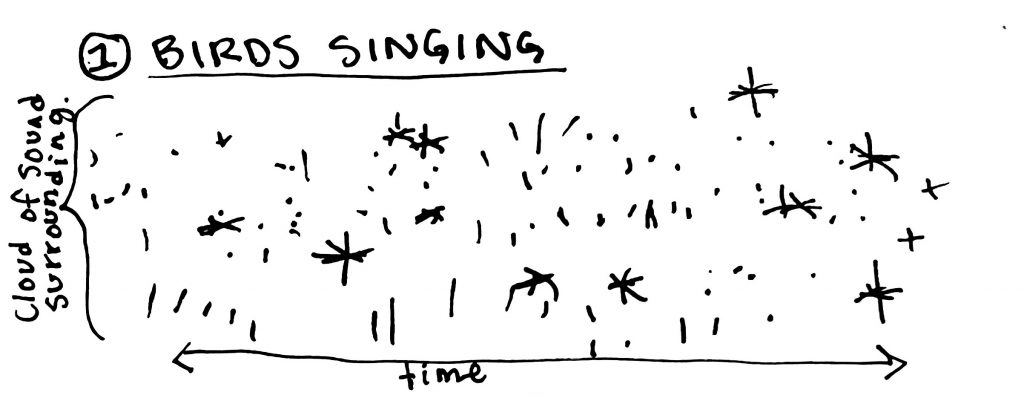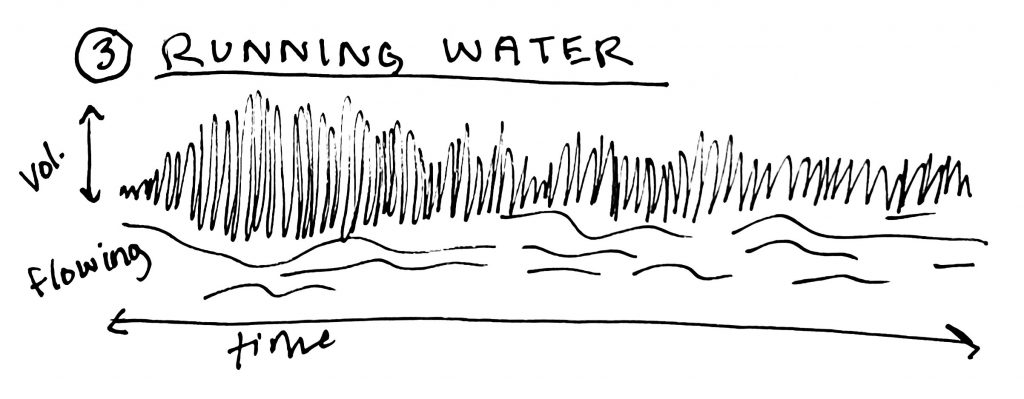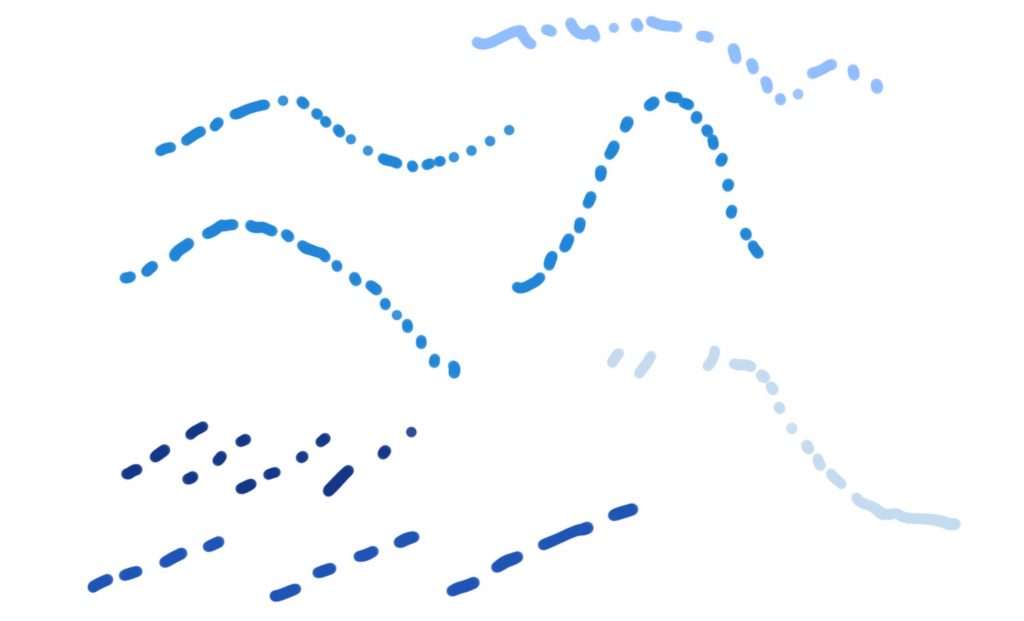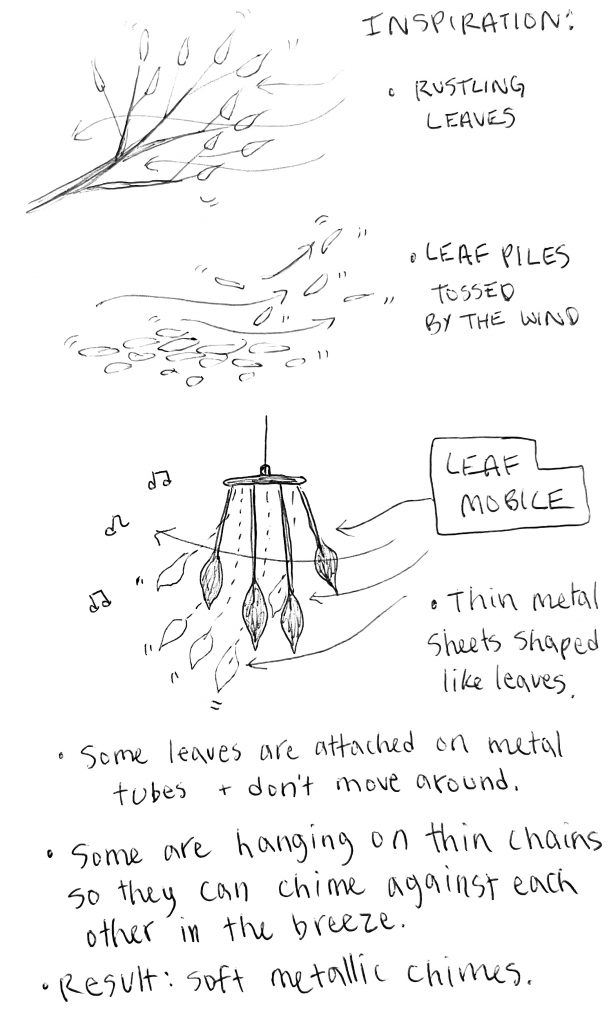In Class

For the first part of the in-class exercise, I had tried to conceptualize what the sound bites would look like visually. My concept drawings are trying to depict what I imagine the object to look like: either birds in a tree canopy, the sound of the windsheild wipers or wheels while driving, and the sound of water going down the drain.

Pictured are linework studies while listening to Daniel play the piano. I was playing with line form, including thickness, curl shape, “lows” and “highs”, and medium while reading left to right.

I kept imagining the physical layout of sheet music and decided to use that as a guide in forder to convey timing. I decided to play with a bit of colour and dotting to convey the tone of the song, as once the lines started to become too covoluted, dark, or smudged, they appeared too ominous. I wanted it to look almost like a language at first glance.

Takehome: Part 1

For the take-home assignment, I went for a walk in the rain to a nearby stream. Pictured above are my first attempts at trying to visualize the sounds. Upon reflection, I realized that excessive dottiness and waves wouldn’t work on their own. Watercolour was the obvious choice to convey the moisture and I used circular pencil shading with waves to convery the sound.

I tried closing my eyes and listening to the sounds both with and without an umbrella. Without an umbrella, the sounds of the rain on my raincoat made me a little uncomfortable – I didn’t want to stand in place. I could hear the water falling all around me and the cool drops on my coat. With the umbrella, the sound of the water droplets was magnified – but I also found that I was willing to stand in place for longer.


When I closed my eyes, I could imagine the stream, and running water, and thought about water rushing and bubbling. I thought about the water droplets falling on the leaves of the trees. The stream is located just alongside a residential roadway and so every so often I would hear the sound of cars passing by.

Pictured above is a section – collage using some of my conceptual drawings, showing the vehicle traffic, a nearby tree, and the stream downhill.
Takehome: Part 2

For the last part of the assignment, I started by looking at wind interventions, and was drawn to Aeoliean Harps. These harps use fine string with an echo chamber located adjacent to create harmonic sounds from the wind. I thought about the size of the strings and chambers – I wanted their sizes to vary to allow for a range of cound. I considered their arrangement: In order for the sound to carry, the strings should be within ~15 degrees perpendicular to the ground. As I was imagining this object to exist in Vancouver, I also wanted to incorporate the rain. I started thinking about ways that these harps could be used with rain, so that the sound could carry through or be modified bu the sounds of raindrops
. 
My first inclination for structure was to have some sort of half-open pergola with small harps along various rotate axis’ – however, I realized this would limit the arrangement of the string and maybe impede the instrument. Looking back at Luke Jerram’s Wind Pavilion, I realized that the circularity of the form allowed for the wind to blow in many different directions. I was unhappy with my first attempts at making a circular pergola, but I thought about using curvature to create some other form of shaded structure.

My final drawings show some possibilities for landscape interventions that use wind to create a soundscape. The top one has the tubes of the harps located rougly perpedicular to the ground. This form would be the more minial of the two, but offer limited protection (or enhancement by) the rain. The bottom structure would have a series of harps running along the curvature of the pergola. The intention here is that the sound of the rain would enhance the sound of the wind while also providing shelter. Both of these would ideally be made with stainless steel and steel or nylon string.


